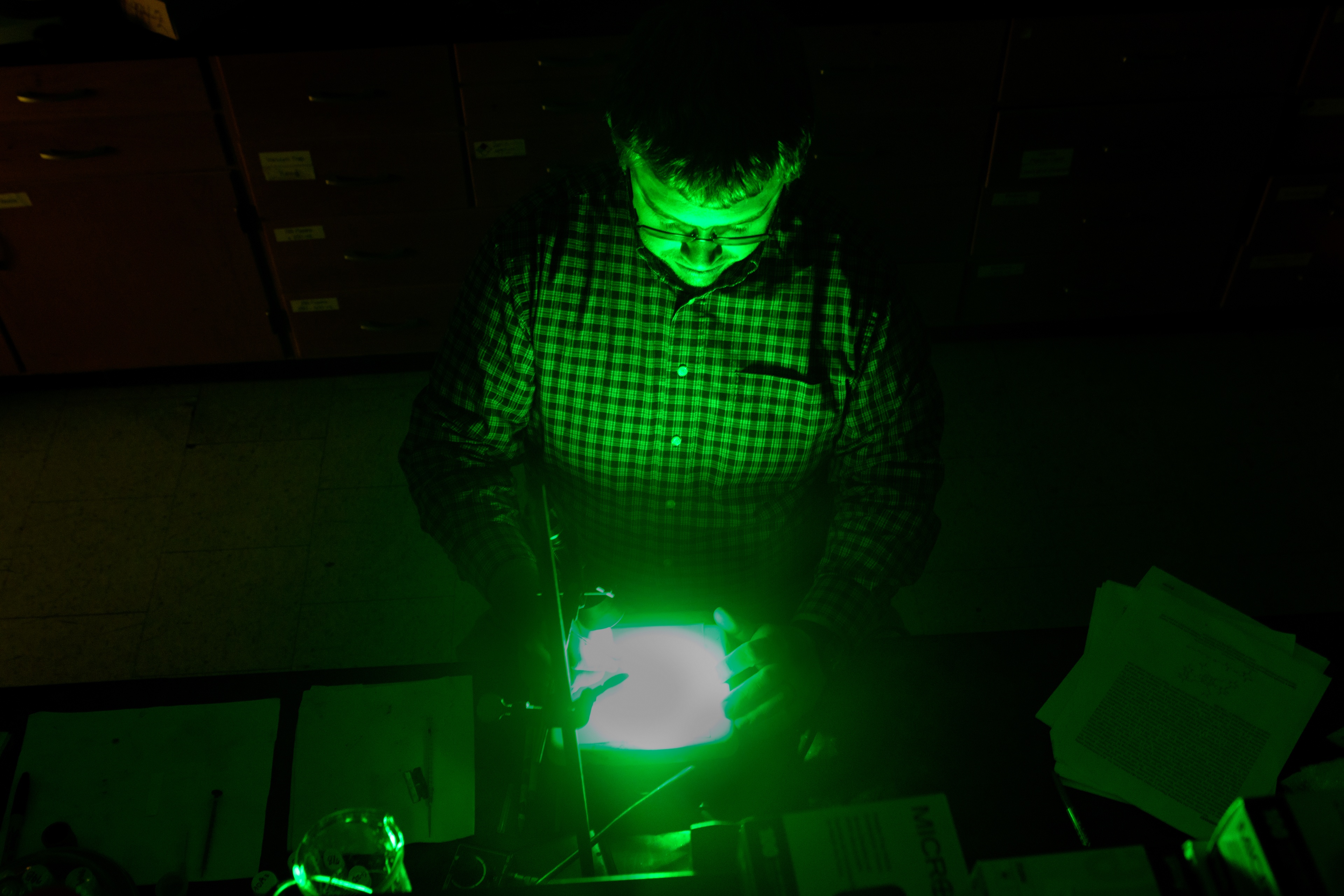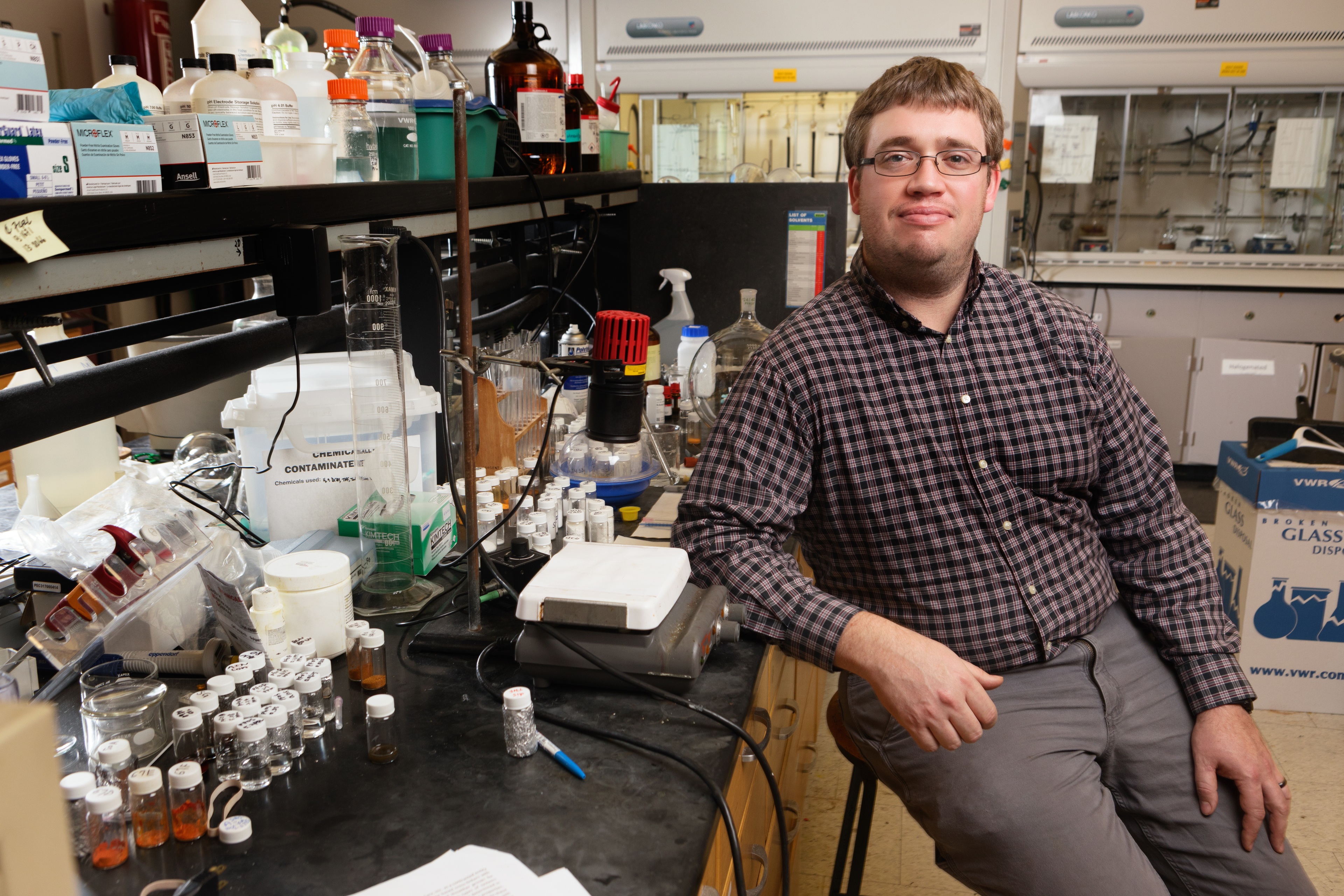
BGSU researcher studying use of photoresponsive sponges as environmental difference-makers
Dr. Joseph C. Furgal wins NSF grant for research into use of smart-material sponges on 'forever chemicals' in water
By Nick Piotrowicz
The prolonged use of so-called “forever chemicals” has proven to be a danger for the future of water systems across the globe – but a Bowling Green State University researcher is studying new technology that possibly could be a breakthrough remediation for aquatic environments.

Dr. Joseph C. Furgal, an assistant professor in the BGSU Chemistry Department, won a $247,112 grant from the National Science Foundation (NSF) to study the use of smart material sponges on toxic pollutants, research that will include contributions by ethnically diverse groups of high school and undergraduate students along the way.
As part of the NSF’s Launching Early-Career Academic Pathways in the Mathematical and Physical Sciences program (LEAPS-MPS), students can contribute to the project by attending workshops and experiencing lab training with BGSU scientists as a means of sparking enthusiasm for science-based careers and strengthening the U.S. science workforce.
Furgal held the first workshop in November in his hometown of Warren, Michigan.
“Students got a hands-on approach,” Furgal said. “They actually got to work with materials that we made in the lab and saw things in action. Some of the things they got to see were how to degrade polymers, how to separate microplastics and this light-driven sponge, which is what this project is about.”
The issue at hand is the use of per-and polyfluoroalkyl substances (PFAS), a man-made family of chemicals that degrade incredibly slowly, making them a persistent presence in water, soil and even the blood of humans, for whom the chemicals are linked to harmful health effects.
Furgal’s research aims to gain a broader understanding of how to possibly extract these types of compounds from water without removing water itself, which is a major impediment in most strategies, such as those using activated carbon.
Photoresponsive sponges can be “squeezed” with different light wavelengths and intensities – allowing them to catch the pollutants reversibly and leave water behind.
“Our material has functionality built into it, which comes in the form of organic groups that cause the material itself to repel water,” Furgal said. “These groups allow tailoring for substances that don't really love water, but are still present in it in small amounts and will be attracted to and soaked up by our smart sponge material.
“We can take that material after we’ve soaked it up and push it out. We use UV light – or even sunlight, if you wish – to cause the chemical bonds within that sponge to actually change shape. That change in shape will essentially cause the sponge to wring out the captured substance, which can be concentrated for proper disposal.”
Dr. Joseph C. Furgal: Smart-Material Sponges
In this demonstration, UV light is used to shrink a photoresponsive sponge by about 20 percent, which pushes out a dye to represent a hydrophobic toxin in water.
Along with BGSU graduate student Nai-hsuan Hu, Furgal last year published research in Advanced Functional Materials entitled, “Photoreversible Loading and Unloading of Q-Silsesquioxane Dynamic Network Sponges.”
The topic is still relatively new, he said, but has shown promise in addressing a complex problem with a reusable environmental remediator.
Ultimately, Furgal said he hopes to turn the use of photoresponsive sponges into a device that can remove contaminants from well water.
“My goal is actually to make a device that you can put into wells with a small battery pack so that you can pump water through a membrane of our material to actually clean groundwater without having to see it or actually pump it out of the ground,” Furgal said. “After a certain amount of time when you’ve predetermined how much your material can soak up, you would then lift it out of a monitoring well, and use UV to wring out the sponge. Initial testing has shown these materials to be at least as effective as the current state of the art.”
Related Stories
Media Contact | Michael Bratton | mbratto@bgsu.edu | 419-372-6349
Updated: 02/02/2022 02:32PM



